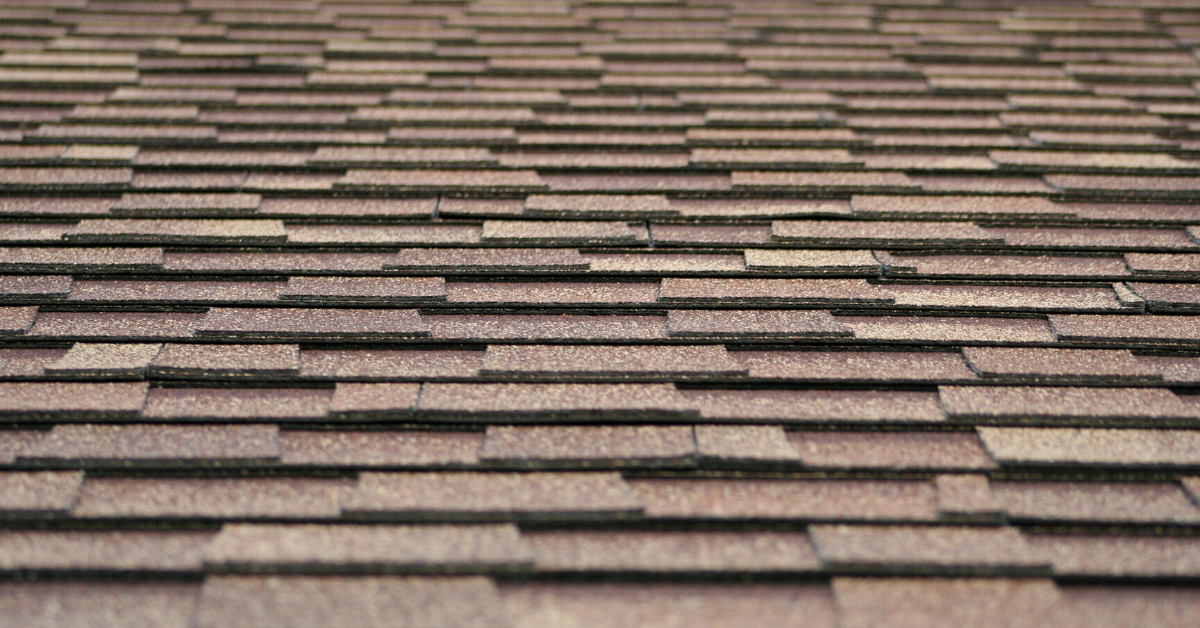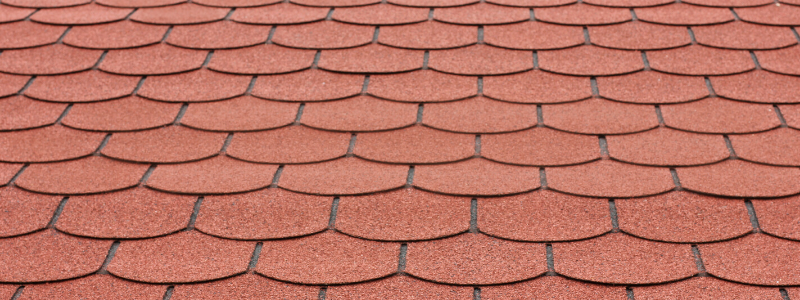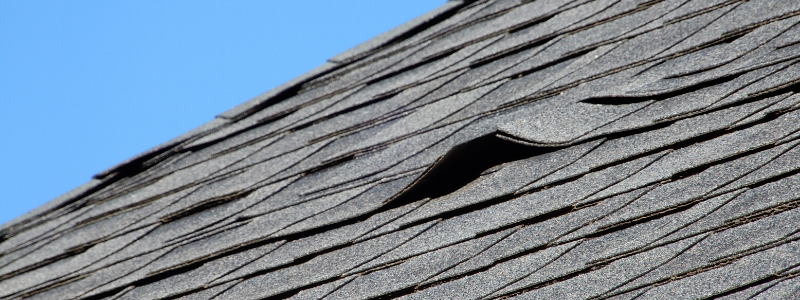
Creased Shingles
In the state of Colorado, intense wind and heavy snow is a very common occurrence. Many Coloradans are equipped to handle drastic weather changes, but homes and businesses can sustain damage during hail, rain, or snow storms. These drastic weather patterns can cause costly repairs, including commercial and residential roof deterioration. Even small tears and bends can lead to leaks and once a leak has set in, it can cascade. In some instances, roof damage may not be extensive or even noticeable. However, for this reason, it’s important to get your roof regularly inspected. An experienced Colorado roof will be able to check for common signs of water stains, curling, and creased shingles. Creased shingles are a threat to the stability and durability of any roof. But, fortunately, they’re easy to spot and, with the help of B&M Roofing, easy to fix.

What Are Creased Shingles?
As the name implies, creased shingles are bends in asphalt shingle roofing material. More often than not, creases are one of the most visible signs of roofing deterioration. A damaged shingle, when inspected closely, will provide roofers information helpful to a Colorado roofing inspection or evaluation. Creasing usually occurs in intense wind storms. If the wind finds leverage within the roofing material, it can push shingles up and back down until it forms what is known as a crease. If this process happens repeatedly, a shingle may tear off completely, leaving the material beneath exposed and also vulnerable.
More often than not, the crease on the shingle will begin on one side of the shingle—the right or left—but won’t reach the other side of the shingle. The creasing itself will, most likely, take the form of a faint and slightly-jagged line. Some creased shingles, though, have far more apparent creases that are larger and a bit darker.
Who Do Creased Shingles Happen?
When the wind is moving at an intense speed, it isn’t uncommon for the shingles on a roof to become loose. If the wind is especially intense, it can cause the shingles on the roof to lift up and flap in the wind. As this takes place, there are two things that can happen. One of which is that the wind, due to its intensity, pushes the shingle upwards and creates a very visible crease in the asphalt material. The other is that the loose shingle pushes up against another shingle, and by pushing up against the shingle a crease is formed on more than one.

That said, there are other reasons creased shingles are an indication that something “more” might be happening with your commercial or home roof. While high winds are often the culprit of creased shingles, there are instances where other roofing elements might be impacting the health of a roof. As a whole, roofing systems—including the frame, underlayment, sealant, and ventilation systems—should be working together to keep a roof strong and intact. Creased shingles can also happen for the following reasons:
- A sealant is becoming unsealed due to age, product defect, or poor installation.
- Installing shingles late in the year, which prevents the sealant from softening in the warm sun and, thus, it cannot perform as a reliable adhesive.
- The sealant had dirt on it prior to the shingles being installed.
- High overdrive, underdrive, angled, or mislocated placement of a nail.
It’s important to work with an experienced Colorado roofing company that can provide roof installations that are meant to extend the lifetime of your roof.
Wind Can Damage a Residential Roof
Due to Colorado’s intense climate, intense winds are far from an uncommon experience. When there are intense winds, it isn’t uncommon for roof shingles to be lifted from off of the roof, while still attached, and to begin flapping in the wind.
If a roof shingle isn’t bonded to the roof correctly—or, alternatively, if the adhesive has broken down—the wind can move into the open spaces underneath the shingle. When wind moves into these open spaces, it can push the roof shingle upwards, leading to the aforementioned “flapping in the wind”. Flapping roof shingles may begin to bend. A crease can easily form when shingles are bending into unnatural positions or angles. Sometimes, though, the roof shingle doesn’t bend at an unnatural angle. Instead, it pushes up against the roof shingle that is directly below or above it. If it pushes up against this roof shingle with force, then this can cause two creases to be formed on two different roof shingles.

Why Are Creased Shingles Bad?
When your roof has a creased shingle, that means two things. One, it means that there is a pocket of space underneath the shingle that is open, which is how the air got underneath it and lifted the shingle up. Two, it means that your shingle is missing granules, due to the crease. Both of these are quite bad because they directly affect the stability of your roof and its ability to protect the interior of your property.
For a shingle to become creased, it must be lifted off of the roof. But, for this to happen, a strong wind must be able to go underneath the shingle. If there is a pocket of open space underneath the shingle, then a strong wind will be able to do this, causing the shingle to lift up.
When there is a pocket of open space underneath the shingle, it means that the shingle isn’t fully protecting the interior of your property. Things like rain, ice, and wind can flow into your property. If this isn’t taken care of, it can lead to some very significant damages.
As a shingle becomes creased – whether by being bent at an unnatural angle or pushing across another shingle – it loses granules. Granules from the entirety of shingle, and they protect the shingle from the sunlight. If there are fewer granules on the shingle, then that means that the shingle itself will begin to deteriorate, becoming far less effective at keeping the interior of your property safe.
What Is The Best Way To Fix Creased Shingles?
Creased shingles must be replaced and resealed before more damage can occur. Missing granules lessen the stability and safety of an asphalt shingles roofing system and, in turn, your roof and the interior of your property. Missing granules may also allow sunlight to shine down onto the shingle, and this can easily cause the shingle to rot and decay. If this happens, then rain, snow, and wind— and all elements that Colorado experiences frequently—can break through the shingle and wreak havoc on your home. This is something to avoid as it’s both costly and destructive to the inside and outside of the property.
While noticing creased shingles usually isn’t too difficult, replacing those shingles and applying the proper adhesive to them can be difficult. That’s why, at B&M Roofing, we offer services that are dedicated to locating the creased shingles on your roof and replacing them in the most affordable and effective manner possible! If you think you’re experiencing creased shingles on your Colorado roof, give us a call today at (303) 443-5843.




































